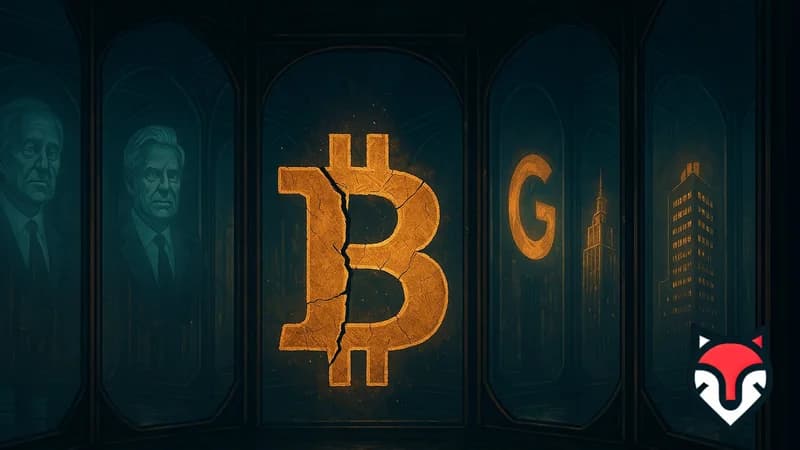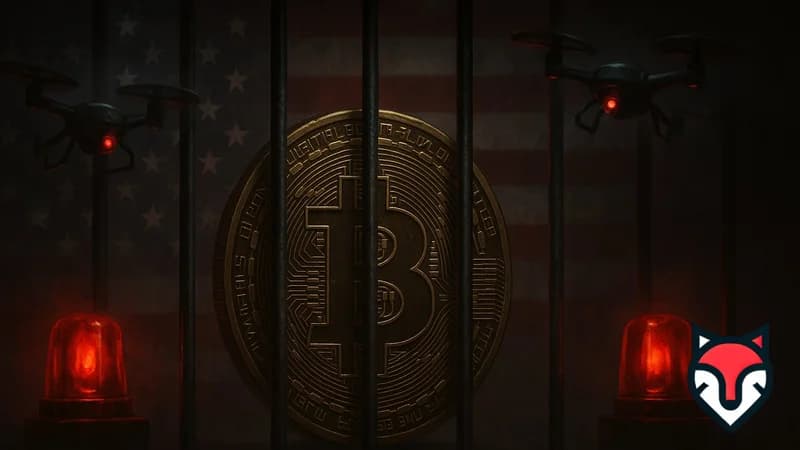Suggested
News
Last updated: Thursday, April 10, 2025

Is Bitcoin’s Decentralization Just an Illusion? Unpacking Bitcoin Decentralization in 2025
It’s April 9, 2025, and Bitcoin’s still the poster child of decentralization—a currency free from banks, governments, and suits. Launched in 2009 by the mysterious Satoshi Nakamoto, it promised a financial revolution: power to the people, secured by a global network. Today, with a $1.5 trillion market cap and 15,000 nodes humming worldwide, Bitcoin’s decentralization is gospel to millions. But is it real—or a mirage? Let’s peel back the layers of Bitcoin decentralization and see if the dream holds up in 2025.
The Decentralized Dream Defined
Bitcoin’s big pitch is simple: no central boss. Unlike dollars or euros, no Federal Reserve prints BTC. Miners, nodes, and users run the show, spread across continents. By 2025, over 1 million active addresses trade daily, and the blockchain’s logged 900 million transactions since day one. It’s a ledger no one owns, secured by math—proof-of-work keeps it ticking. On paper, it’s the ultimate middle-finger to centralized control. But dig deeper, and cracks appear.
The Pillars of Bitcoin Decentralization
Three legs hold up Bitcoin’s decentralized throne: miners, nodes, and developers. Miners crunch numbers to validate trades—think 200 exahashes per second in 2025. Nodes (15,000+) store the blockchain, checking miners don’t cheat. Developers tweak the code, but can’t force updates—users choose. No single point of failure, right? In theory, it’s a web of power, with 50 million Americans and 100 million globally buying in. Bitcoin decentralization shines—until you zoom in.
The Mining Monopoly Myth
Mining’s where the illusion whispers loudest. In 2025, 70% of Bitcoin’s hash rate clusters in just three countries: the U.S., China, and Russia. Big players like Foundry USA and AntPool control 40% of it. Sure, anyone can mine, but with $50,000 rigs and cheap power, the little guy’s out. If a few pools collude—or a government flips a switch—51% attacks loom. Bitcoin’s decentralized heart beats, but it’s concentrated in too few hands. Is this freedom, or a new elite?

Nodes: The Unsung Heroes
Nodes balance the scales—or do they? Anyone can run one; a Raspberry Pi works. In 2025, 15,000 full nodes keep Bitcoin’s ledger honest, from Berlin basements to Tokyo rooftops. But most users don’t bother—90% rely on exchanges like Coinbase, not personal nodes. If Binance or Kraken goes dark, millions lose access. Decentralized in theory, centralized in practice. Nodes scream resilience, yet user habits hint at fragility.
Developers and the Code Conundrum
Who steers Bitcoin’s ship? Developers—think Bitcoin Core—propose upgrades like Taproot, live since 2021. But they don’t rule; miners and nodes vote with their software. In 2025, 80% run Core, but a handful of coders (fewer than 50) drive changes. If they quit—or get coerced—progress stalls. Open-source sounds democratic, yet whispers of a tech oligarchy linger. Bitcoin decentralization leans on these unsung geeks—too much?
The Exchange Elephant
Here’s the kicker: most Bitcoin lives off-chain. In 2025, 60% of BTC sits on exchanges—Binance, Coinbase, you name it. Users trade IOUs, not real coins, trusting centralized giants. Hackers hit Binance for $600 million in 2022; it could happen again. Satoshi’s peer-to-peer vision fades when your BTC’s in Changpeng Zhao’s hands. Decentralized tech, centralized custody—ironic, right? Bitcoin adoption booms, but at what cost?
The Government Shadow
Governments test the dream, too. By 2025, the U.S. tracks every $600 BTC trade, China’s banned mining (again), and India mulls a crypto kill-switch. If regulators sync up, they could choke exchanges or tax miners into submission. Bitcoin’s borderless—until it’s not. El Salvador’s BTC experiment (70% adoption) bucks the trend, but one nation can’t save the network. Decentralization bows to geopolitics more than hodlers admit.
The Numbers Game
Stats cut both ways. Bitcoin’s Gini coefficient—measuring wealth spread—hits 0.88 in 2025; 1% of wallets hold 80% of BTC. Mining’s 40% concentration mirrors this. Yet 15,000 nodes and 200,000 miners globally defy total control. Transactions hum at 500,000 daily, and no single hack’s killed it in 16 years. Bitcoin decentralization’s not dead—it’s just uneven. The blockchain’s pure; the ecosystem’s messy.
Voices in the Debate
Who’s calling it? Vitalik Buterin says Bitcoin’s ‘too rigid’—Ethereum’s his decentralized darling. Michael Saylor bets big, holding 300,000 BTC, preaching unshakable faith. Critics like Peter Schiff call it a ‘centralized Ponzi,’ pointing to whales and pools. On X, hodlers clash with skeptics daily—search ‘Bitcoin decentralization’ and it’s a war zone. In 2025, the jury’s out, but the fight’s loud.
Real-World Bitcoin
Day-to-day, it’s a mixed bag. A Miami bar takes BTC, peer-to-peer, pure Satoshi style. But a New York trader buys via Coinbase, locked in centralized rails. In Texas, a rancher mines with solar, defying pools—rare but real. Adoption’s up—30% of U.S. adults own crypto—yet 80% lean on middlemen. Bitcoin decentralization lives in pockets, drowned by convenience elsewhere. It’s there, just not everywhere.
What’s Next for the Dream?
By 2030, Bitcoin could harden or crack. Lightning Network scales it, cutting central chokeholds—1 million transactions per second by 2025. But quantum tech looms, threatening encryption. A digital dollar might outpace it, or grassroots nodes could double to 30,000. Peek at CoinDesk or Bitcoin Magazine—it’s unfolding. Bitcoin decentralization’s no illusion; it’s a battle, half-won.
Zoom out: Bitcoin’s a mirror. It reflects our trust—or distrust—in systems. In 2025, 50 million Americans hold it, betting on freedom. But freedom’s messy—mining pools, exchange reliance, and regulatory shadows blur the line. Search ‘Bitcoin decentralization 2025’ and you’ll see: it’s not black-and-white. It’s a spectrum, and where it lands depends on us—users, miners, coders. Illusion? No. Imperfect? Yes.
Why It Matters
Bitcoin decentralization’s no academic yawn—it’s your stake in a financial future. If it’s real, you’ve got a shot at autonomy; if it’s fake, we’re back to square one with shinier tech. In a world of digital dollars and cashless apps, Bitcoin’s the wildcard. Hodler or hater, its fate shapes your wallet. So, is it just an illusion? Not quite—it’s a promise, bent but breathing, in 2025 and beyond.
Suggested Articles
For You
Related Articles
- What If Bitcoin Fails—Who Wins in a Post-BTC World?
- Why Bitcoin’s Strength is Its Biggest Weakness in 2025
- How Bitcoin ETFs Rewrote the Rules of Wall Street
- Is Bitcoin Still a Hedge Against Inflation—or Just Hype?
- Can Bitcoin Survive a Cashless America? Exploring Bitcoin Adoption in a Digital Era
- How Trump’s Policies Could Turbocharge Bitcoin in 2025: A Political Power Play
- Will Bitcoin Ever Hit $1 Million—Or Is That a Pipe Dream?
- How Bitcoin’s Next Upgrade Could Change Everything in 2025
- What If the U.S. Banned Bitcoin Tomorrow?
- Why Bitcoin Isn’t the Digital Gold You Think It Is: Debunking the Bitcoin Myth












